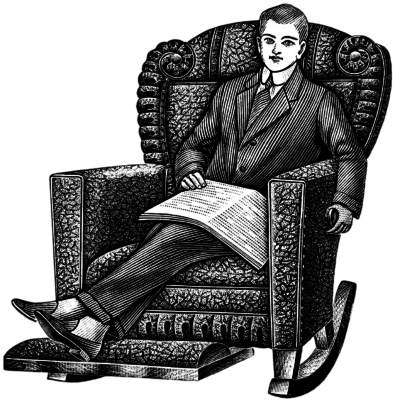Do you ever wonder about the history of the systems you rely on every day?
They didn’t teach us database history in school. Instead, we got calculus and art and interpretive dance. Fat lot of good that did us, right?
So from time to time, we’re taking it upon ourselves to bring you the history of some important database concepts and features. You won’t find this stuff in Books Online, no no.
For today’s entry, we need to take you back to the 1800s.
Meet Maurice Gutenberg.

Maurice was the great-great-great-great-great-great-grandson of Johannes Gutenberg, the man who pioneered the mass production of books.
Maurice benefitted greatly from his great-great-…okay, let’s just say benefitted from his ancestor’s invention, living large off the printing press royalties. (Johannes also invented hardware patents.) Maurice built one of the largest libraries in Europe, devouring books from every learning institution he could find. In fact, he was partially responsible for the Great Book Price Bubble of 1899.
As Maurice’s collection grew, he needed a system to track his book inventory and pricing. He turned to computers, naturally – his neighbor happened to be building an early prototype of a machine that would later turn into the Commodore VIC-20.
To Maurice’s astonishment, the computer logged every one of his purchases and sales in single file. The data was continuously added, one row at a time. With each update of an existing row, it was simply added to the end as a new version. This system was modeled after the papyrus rolls of ancient Egypt.
Maurice immediately channeled his gr…ancestor Johannes, pulled out a page from one of his books, and pointed at it. “We should store the data like this!” he exclaimed.
“But it will get out of order!” a neighbor cried out. (Ironically, you might recognize part of that neighbor’s name…Birgitta Hallengren.)
Maurice tired of European life (especially the part about defragmenting his pages.) He later sold off his entire book collection, packed up his remaining belongings, and headed for Seldovia, Alaska’s Best Kept Secret.
But you might just have heard of Maurice’s first database: pubs, short for publications.
Meet Robert of Lochsley
Though ne’er the brightest lad, Robert was still the sole inheritor of his dad’s land, which included the largest loch known to both Robert and his dad, Auchbert.
His mother, who pretended to die during childbirth, had seen many much larger lochs.
Left on his own, Robert proceeded to spend the family fortune trying to prove that he indeed had the largest loch. Much to his dismay, he found out that other lads had lochs twice, thrice, and sometimes four-ice the size of his own.
Mad with jealousy, he began painting landscapes of his loch comically out of perspective. Often covered with arrows pointing to “my loch”, and then much smaller arrows pointing to tiny dots noted as “your loch”. Though he unwittingly also invented the poop emoji, that’s not the story we’re here to tell.
When he tried selling his paintings to other nobles, the typical response was “aye that’s nay a loch”, which lead to him being called Robert of Nay Loch.
He turned into such a laughing stock, that many years later when Microsoft needed a way to identify fools, they came up with the eponymous NOLOCK hint. Whenever someone uses this, it’s said that Robert returns from the grave to festoon their data pages with incorrect information as punishment.


17 Comments. Leave new
Isn’t this just a word for word copy of Ken Burns “History of Tabulation” ?
What do I need to read history books for?
I think I saw a commercial for this is in next season’s Drunk History.
OK, time to put away the absinthe, guys.
. . . although it does make the heart grow fonder.
Very informative. I do have to disagree with a point in your opening; I use interpretive dance on at least a weekly if not daily basis.
Chad – I’m right there with you.
Somewhere in this series, it would be interesting to me to hear how Microsoft arrived at the 8 KB fixed page size, if they ever considered variable page sizes, and if so, why they chose not to.
Thanks for the history.
Well no-one will ever need more than 8KB on a single page, so let’s just go with that.
If Mel Brooks did a History of the Database Part 1, it might be similar to this.
Love it!
I had to shower after reading about Robert of Lochsley. Such a dirty read.
It is said Robert never married. He was too non-committal.
HAHAHA, nicely done.
I knew something was up when the byline said “Brent Ozar Unlimited Team”, but I was really into it until the Hallengren reference.
Also, I hate you.
I LOVED THE HALLENGREN REFERENCE
That was my favorite thing in all of it, hahaha.
I’m surprised that you didn’t hold this history in reserve until some time around the first of April to post.
Now, who is brave enough to try to get this into Wikipedia?!?
With this question, your interviewer is asking you to sell him on you and your status as the best person for the position